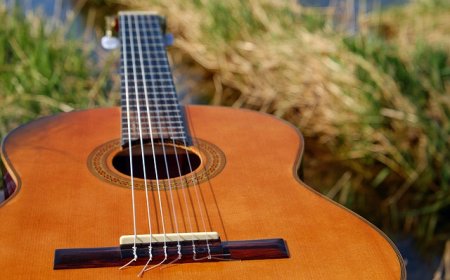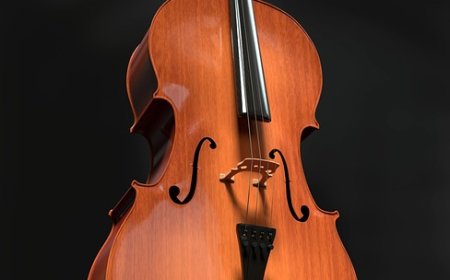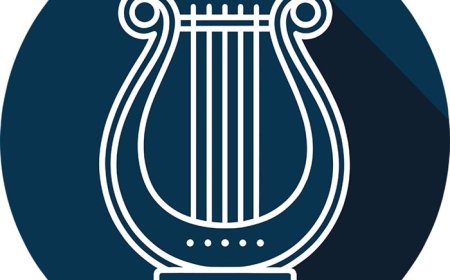French Horn Facts for Students | Learn How the French Horn Works & Its History
Explore the French horn: how it works, its parts, famous players, history, and fun facts. A complete guide for students and beginners curious about this unique brass instrument.
🎵 All About the French Horn
🥇 Introduction
The French horn is one of the most beautiful and mysterious instruments in the brass family. Its long, coiled tubing and soft, mellow tone make it unique among brass instruments. Whether it’s playing heroic fanfares in a movie soundtrack or smooth harmonies in a symphony, the French horn stands out for its warm sound and elegant shape. It’s often called simply “the horn” and is used in orchestras, concert bands, and chamber music groups around the world.
🎺 What Is a French Horn?
A French horn is a brass wind instrument that produces sound when the player buzzes their lips into a small mouthpiece. What makes the horn different from other brass instruments is its circular shape and its use of a hand in the bell to help shape the tone and pitch. The French horn has rotary valves instead of piston valves, and it usually has a very long piece of tubing—about 12 to 13 feet—rolled into a circle.
Most modern French horns are called double horns. This means they have two sets of tubing (one in the key of F and one in the key of B♭) and a special thumb valve to switch between them. This allows players to reach more notes accurately and smoothly.
🧩 Parts of the French Horn
Although it looks like a big brass swirl, the French horn has several important parts that work together to create its rich sound:
- Mouthpiece – A small, deep cup where the player buzzes their lips to start the vibration.
- Tubing – Long coiled metal that guides the air; about 12–13 feet when uncoiled.
- Rotary valves – Usually three or four wheels that redirect air through different tubing lengths to change pitch.
- Bell – The flared end where sound comes out; players often place their right hand inside to fine‑tune tone and pitch (hand‑stopping).
- Thumb trigger – A lever that switches between F and B♭ tubing on a double horn for extra flexibility.
⚙️ How Does the French Horn Work?
The French horn works like all brass instruments: the player blows air through buzzing lips into a mouthpiece, creating vibrations that travel through the tubing. Pressing valves changes the path length (longer tubing for lower notes, shorter for higher notes). On a double horn, the thumb trigger switches between two tubing systems (F and B♭), expanding the playable range and improving intonation.
Because horn partials lie very close together, precise embouchure (lip shape) and careful listening are essential to avoid playing the wrong harmonic. Hand placement in the bell (hand‑stopping) further shapes tone and pitch.
📜 History of the French Horn
The French horn evolved from early hunting horns of the 1600s. Natural horns had no valves and could play only the harmonic series. In the 18th century, players discovered hand‑stopping techniques to reach more notes. The invention of valves in the early 1800s allowed for fully chromatic playing. By the late 19th century, the double horn combined F and B♭ systems into one instrument, becoming the standard in orchestras and bands worldwide.
🎷 Famous French Horn Players
- Dennis Brain – Legendary British horn soloist who popularized the horn repertoire.
- Sarah Willis – Member of the Berlin Philharmonic and renowned educator.
- Dale Clevenger – Longtime principal horn of the Chicago Symphony Orchestra.
- Barry Tuckwell – Australian soloist known for his recordings and teaching.
- Radek Baborák – Czech virtuoso celebrated for his expressive performances.
🎶 Learning to Play the French Horn
Beginners often start on a single horn in F, which is lighter and simpler. Lessons focus on buzzing the small mouthpiece, reading partials, and mastering hand‑stopping. As players advance, they move to a double horn, learning thumb trigger technique and valve fingerings. Strong ear training is vital for intonation on this challenging instrument.
French horn students join school bands, youth orchestras, and chamber groups, often playing harmony or featured solo lines in classical and film music.
😄 Fun Facts About French Horns
- The internal tubing is over 12 feet long when uncoiled.
- In many languages it’s simply called “horn in F”—“French” is an English convention.
- Hand‑stopping in the bell can lower a note by a semitone and alter tone color.
- Skilled players can span more than four octaves on the horn.
- It’s considered one of the hardest brass instruments to play in tune.
- Frequently used in movie scores (e.g., Star Wars, Harry Potter) for its noble sound.
👧 Kid-Friendly Summary
The French horn is a shiny brass instrument with long, curled tubing and a soft, round sound. You buzz your lips into a small mouthpiece, press rotary valves, and use your hand in the bell to shape the tone. It plays beautiful melodies and warm harmonies in orchestras, bands, and movie soundtracks. If you want an instrument that sounds both mellow and majestic, the French horn is a perfect choice!
📚 Vocabulary Words
Brass family – Metal wind instruments played by buzzing lips
Mouthpiece – Small cup where you buzz to start the sound
Rotary valves – Round valves that turn to change the tubing path
Bell – Flared end where the sound emerges
Hand‑stopping – Placing the hand in the bell to adjust pitch and tone
Double horn – Horn with two tubing systems (F and B♭) and a thumb trigger
Trigger – Thumb lever that switches between tubing systems
Embouchure – The shape and tension of lips used to play brass instruments
❓ Interactive Quiz
1. What gives the French horn its circular shape?
A. Short tubing
B. Double bell
C. Coiled tubing
D. Rotary keys
2. How long is a French horn’s tubing if uncoiled?
A. 3 feet
B. 6 feet
C. 8 feet
D. 12 feet
3. What is it called when a player puts their hand inside the bell?
A. Bell blocking
B. Hand‑stopping
C. Horn muffling
D. Tone pressing
4. Who is a famous French horn player and member of the Berlin Philharmonic?
A. Yo‑Yo Ma
B. Sarah Willis
C. Louis Armstrong
D. Itzhak Perlman
5. What kind of valves does the French horn use?
A. Slide valves
B. Piston valves
C. Rotary valves
D. Finger keys





















































